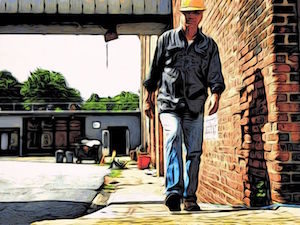
My good friend Jeff Mann, the true Yard Ramp Guy, has asked me to revisit some of my original posts. This week in my From the Archives series: are we gaming the system? Nope, it's gaming us.

Do I look like I'm playing games?
When I was a little kid, I hated board games. Absolutely did not like them. Especially Monopoly.
Risk I could tolerate about once or twice a year. Chess and checkers I could tolerate. That was the extent of the games we had (so maybe my choices were too limited). On rare occasions, I'd get to try a game someone else owned, but there weren't a lot out there (so maybe I come from a place where people didn’t play board games).
Things stick with us. These days, I’m surprised every time I see someone's board game collection (so maybe everyone’s not like me).
We're in a veritable board game renaissance right now. Most estimates put the number published each year in the thousands.
Of course, a huge chunk of these games are still terrible. Many are incredibly complicated and take hours—or even days—to play. Which, I suppose, is just fine for those with that kind of free time, but most of us don't have such free time. Other games are spat out quickly…or are just mediocre rip-offs of another game.

Bored.
Still, and muffling my rant just a bit, there are probably a gaggle of good new games published every year.
I’ve picked up a few over the years that I've grown to like, mostly for my kids and grandkids. My favorite is one I bought for my grandkids: Master Labyrinth. I still drag it out whenever they come over, and I'm probably more excited to play it than they are.
While I was reading about board games, I decided to hunt down the oldest.
Senet, Backgammon, and The Royal Game of Ur are more than 4,000 years old. Go is about 2,500 years old, and Parcheesi is nearly 2,000. Tafl, a Viking ancestor of chess, is some 1,600 years old.
Yes. Humans have been playing games for fun for a long, long time. For better or worse. Mostly worse, I say.
This isn't just an old man rambling on and on about board games. Because I refuse to admit to being old…until I retire.
Yard Ramp Guy Blog: Industrial Disruption
This week my friend The Yard Ramp Guy describes a possible disruption to his own disrupting ways.
Click HERE to get disrupted.



 Photo by Arshiya Urveeja Bose [
Photo by Arshiya Urveeja Bose [



